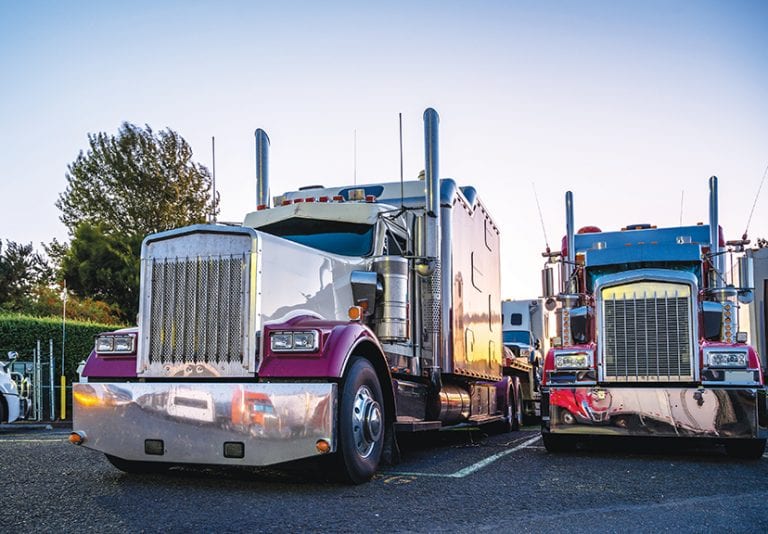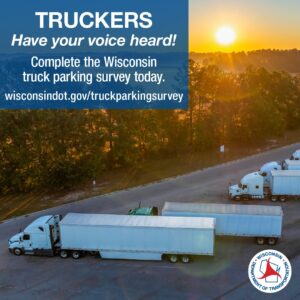While the battle rages in Washington over what should be included in the latest infrastructure bill, drivers can rest assured that some version will eventually pass — that is, if drivers can find a place to “rest” at all.
Neither President Joe Biden’s $2.3 billion infrastructure proposal nor the Republicans $568 billion counterproposal includes funding to address the national shortage of safe parking spaces for truckers.
It isn’t as if legislators aren’t aware of the problem. The issue was addressed in the Moving Ahead for Progress in the 21st Century Act (MAP-21), the highway funding bill that was passed in 2012 and extended until September of this year, was “Jason’s Law.” Named for trucker Jason Rivenburg, who was killed by a gunshot while parked at an abandoned gas station near St. Matthews, South Carolina, the law directed that funding be made available to states to study the parking problem and to construct additional spaces.
On March 26, 2021, U.S. Reps. Mike Bost (R-Ill.) and Angie Craig (D-Minn.) reintroduced the Truck Parking Safety Improvement Act in the House of Representatives. The bill calls for $1 billion in funding over five years to provide additional truck parking. Spaces would be created by expanding current weigh stations and rest areas and by providing grants to privately held truck stops that add additional free parking.
A similar bill introduced last year died in committee.
When new truck parking spaces are created, if they are at all, finding one in which to safely park will still be an important item in each driver’s trip plan. Assuming that a space will be available when you become tired or run out of driving hours is a good way to run into trouble.
Phone apps have virtually replaced truck-stop directories, and these apps do more than simply provide truck stop locations and contact information. Some allow for driver input about the number of available spaces and other information. Some can be used to reserve parking spaces at truck stops — but these are generally paid parking spaces, and the service can sometimes be haphazard.
Trucker Path, TruckPark and Park My Rig are some examples of apps that can be found in the Apple store and Google Play store.
Most of the major truck stop chains have their own apps, including TA/Petro’s TruckSmart, Pilot Flying J’s Prime Parking and the National Association of Truck Stop Operators’ (NATSO) ParkMyTruck.
Whether you intend to pay for parking or not, it’s helpful to know which truck stops have locations in the area you plan on stopping for a rest break. While your first choice may not be available, there may be another option across the street or at the next exit.
Another option might be at the receiver. Some businesses don’t allow trucks onto the property until an hour or so prior to their appointment, but others have available space and allow drivers to take rest breaks on site. Others may know of available parking nearby.
In some areas of the country, however, finding an empty parking place after 5 p.m. is nearly impossible. If changing your schedule is an option, it’s worth considering. Parking spaces are usually easier to find early in the afternoon, and driving after midnight typically means less traffic. Pickup and delivery schedules don’t always allow for a change in the driving schedule, but when it’s possible it can make a difference.
Sooner or later, almost every driver runs into a situation where suitable parking can’t be found. Some drivers look for local shopping centers or abandoned business properties. Be careful. Stories abound of drivers waking up to find their truck has been “booted” or chained, not to be released until outrageous fines are paid. Others have received expensive tickets from local law enforcement. Check carefully for signs and, when possible, ask permission before parking.
Parking on the shoulder of the road or on freeway entrance/exit ramps is another tactic some drivers turn to when parking lots are filled. This is illegal in some jurisdictions but permitted in others. Even where it’s legal, however, there are still dangers. Ramps are often secluded and unlit and could be unsafe for the driver. In addition, it’s hard to gauge the condition of the shoulder at night, and trucks have rolled over after driving on gravel or ground that’s too soft to support the weight of the vehicle.
Wherever you find room to park, the basic safety tips still apply. Light is a proven theft deterrent. Park in well-lit areas when possible. Secluded spots may be quieter, but places with people around are safer; no criminal wants witnesses to his or her activity.
Locks on trailer doors aren’t foolproof, but they will help keep the amateurs at bay. Any evidence of a break-in, including a broken seal, could cause the receiver to reject the load. A sturdy padlock can discourage some would-be thieves before they start.
Backing up close to a wall, post or even another trailer is cheap insurance against cargo theft. If thieves can’t get the doors open far enough, they can’t steal freight.
In the cab, it’s important to keep the doors locked whenever you’re inside and when you leave the tractor for any reason. Thieves may want your money, your keys or anything else of value. Don’t give them an opportunity. Some drivers use “strap” devices that prevent cab doors from being opened from the outside. Keep the windows fully closed; if you need to open one for air circulation, don’t open it far enough for someone to get an arm inside.
If it is necessary to leave the cab, even at a truck stop, always conduct a visual scan all the way around the truck before opening a door. Be aware of your surroundings as you exit the cab and walk through the parking lot. Thieves look for victims who aren’t paying attention. If you are approached, head for the closest area where there are other people.
There is no foolproof answer to the problem of finding safe parking when needed, but with planning and driver diligence, instances of running out of hours with no place to safely shut down can be kept to a minimum.
Cliff Abbott is an experienced commercial vehicle driver and owner-operator who still holds a CDL in his home state of Alabama. In nearly 40 years in trucking, he’s been an instructor and trainer and has managed safety and recruiting operations for several carriers. Having never lost his love of the road, Cliff has written a book and hundreds of songs and has been writing for The Trucker for more than a decade.














